Belfast to Liverpool – Sixth Stop.
#DestinationScotland
Transition Day was upon us, Camy’s busy life was claiming her back again, as is right and proper for a young woman on the career ladder. My urge to progress on my Family Pilgrimage was driving me onwards. But not before we spent the traditional day out at IKEA!

Other families are not like this, but we have migratory DNA in our blood, there are Vikings, Celts, Saxons all well known for relocating around the globe and Sicilian who are a diverse people, having had contact with a great variety of ethnicities due to its location it has always been at the crossroads of many Mediterranean civilisations through the centuries, Greeks, Romans and Etruscans for instance. Woven into our double helices is a strong desire to travel, a wonder lust that sees us adventuring by land, sea and air. So I was sad to leave my granddaughter on the Emerald Isle where she has made her home, and shook my head sadly, even as I rolled up at the end of the queue of cars waiting to board the Stenna Line ferry bound for Liverpool and more overdue visits to family members.



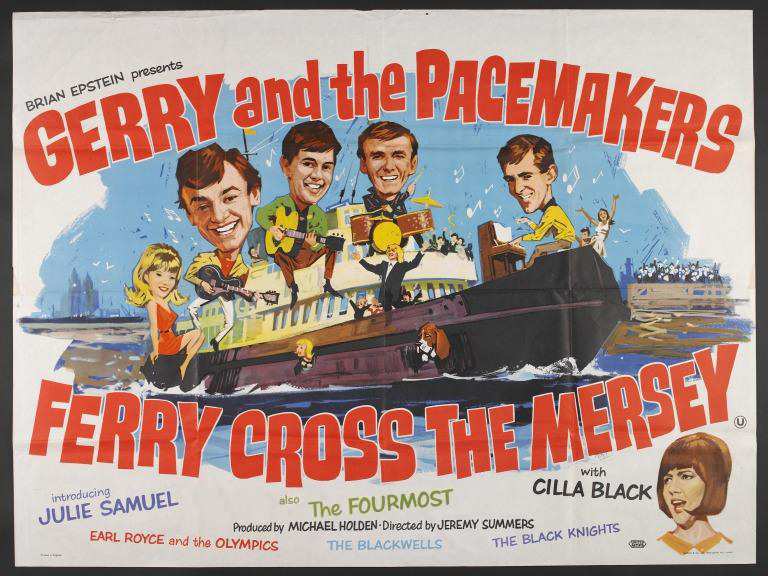
In an interview on BBC TV’s ‘The One Show’ marking the 50th anniversary of his iconic song ‘Ferry ‘Cross the Mersey’, Gerry Marsden, RIP, described how he got the inspiration for the song he took to the top with the Pacemakers. He explained how he wrote the chart topper by singing the song down a pay phone to his Mum as she recorded it on his tape machine! Ferry ‘Cross the Mersey is a love letter to Liverpool”, Gerry recited the lyrics: ‘People around every corner, Seem to smile and say, We don’t care what your name is, boy, We’ll never turn you away‘- and explained how they represented the people of Liverpool, how we welcome and treat people and as Gerry said in his interview with the One Show it’s “what we do”.
Well, I was certainly impressed at the welcome I received at the so called ‘budget hotel’ I had booked…
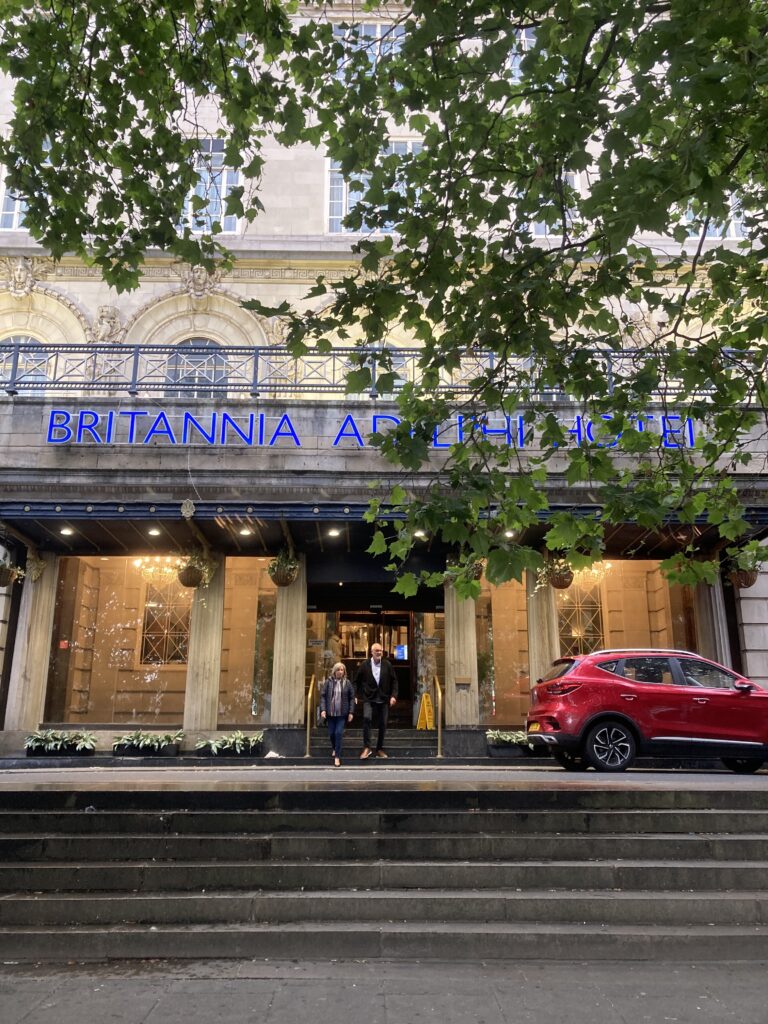
It all makes sense in retrospect, I booked the least expensive hotel for many a mile and it turned out to be palatial, but I did not know what was going to happen down the road then, and there are no spoilers here!
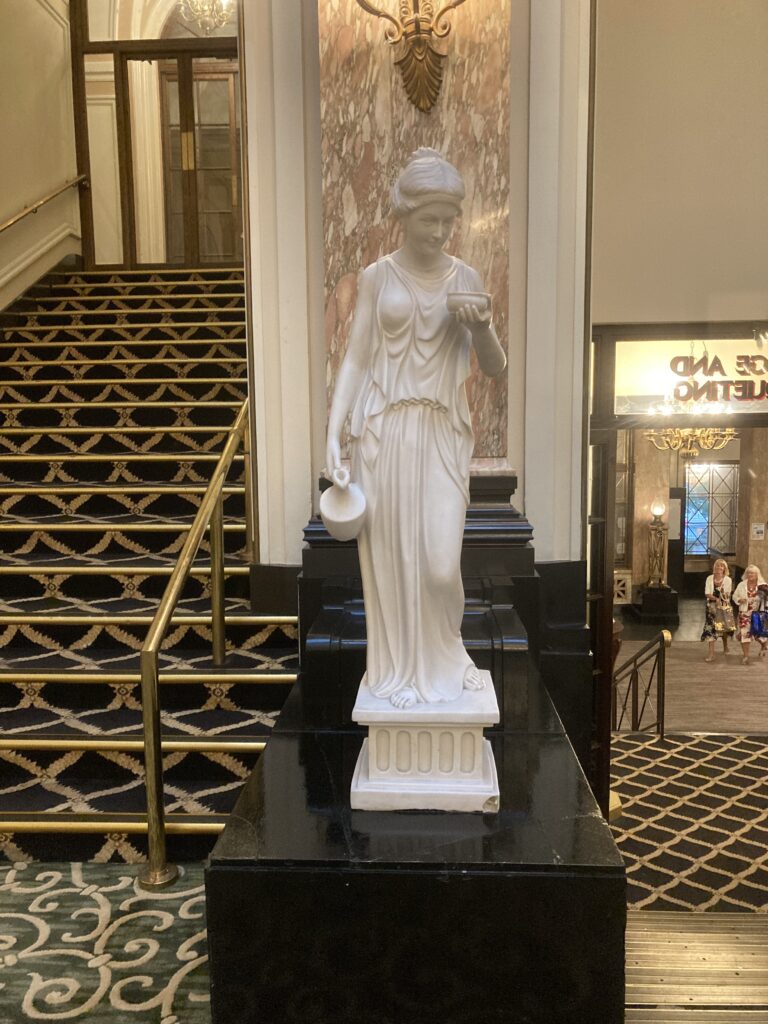
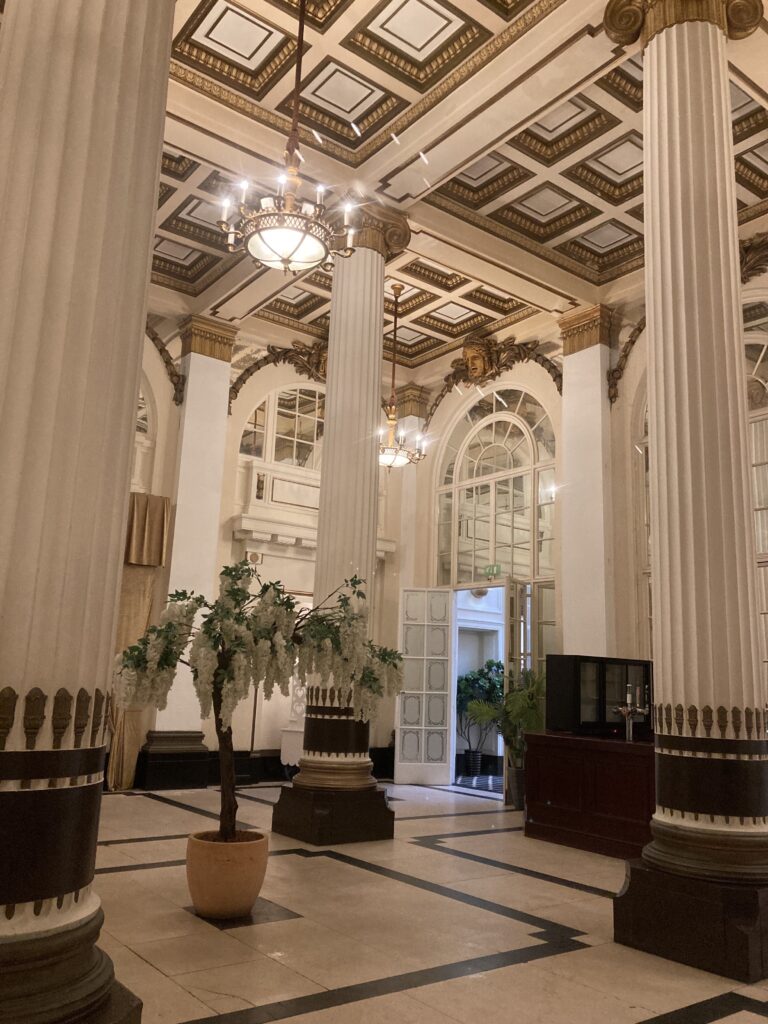
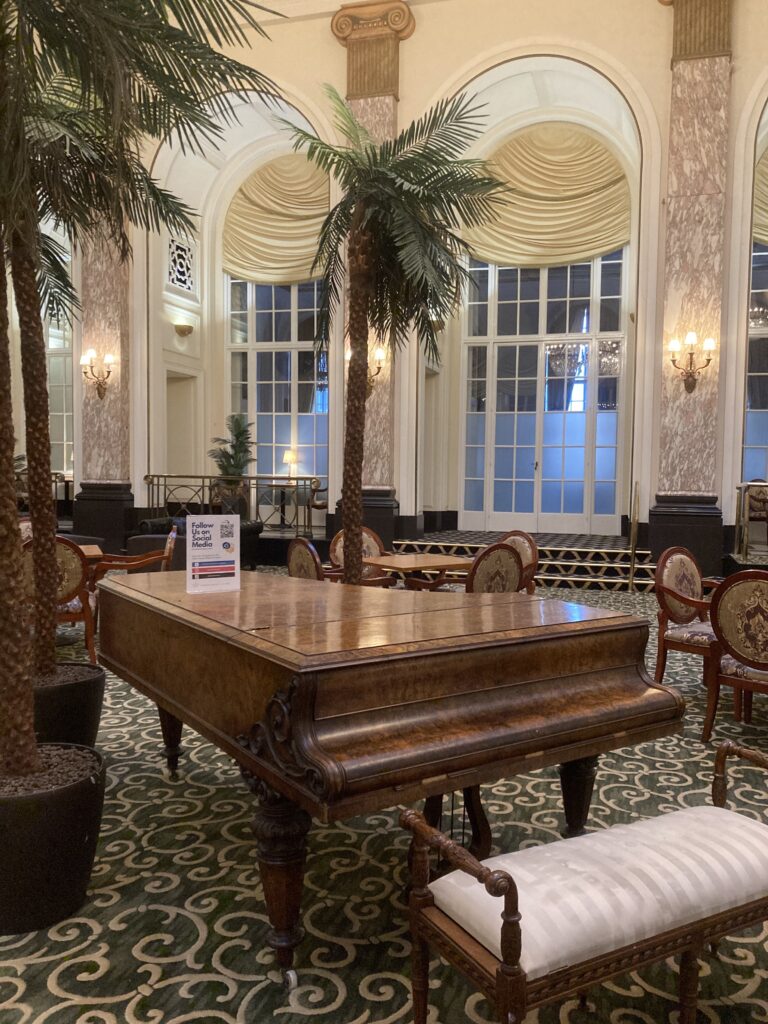
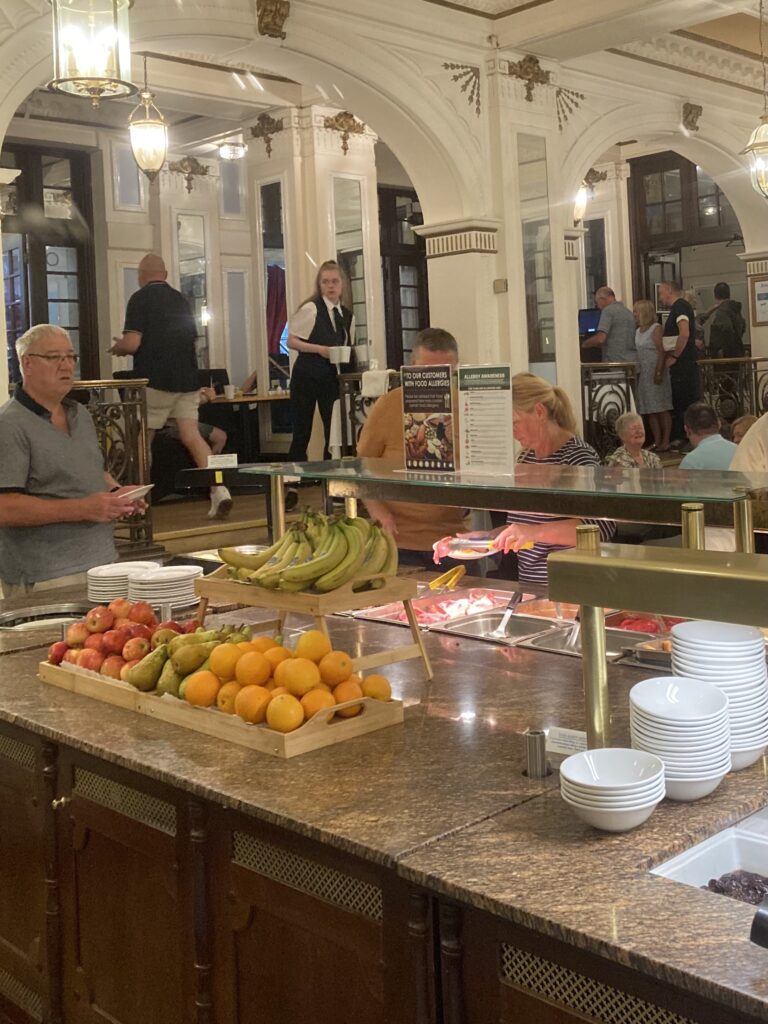

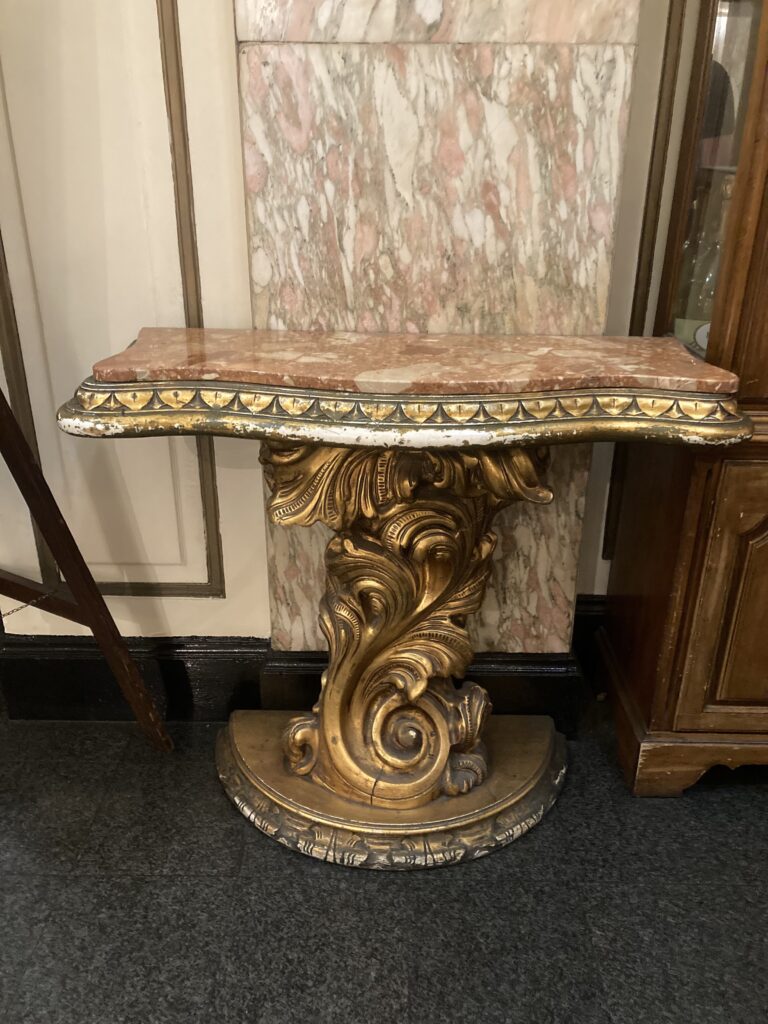
The History of the Adelphi Hotel
When it comes to historic hotels, none can compete with The Adelphi Hotel. Located in the centre of Liverpool, the Adelphi still retains its reputation as one of Liverpool’s most iconic hotels to date and its history one of the most fascinating in Britain with stories spanning over the last two centuries. Liverpool itself celebrated its 800th anniversary in 2007 and is renowned for its charming appeal and character. The city was nominated as the annual European Capital of Culture together with Stavanger, Norway in 2008 bringing in a growing number of tourists to Liverpool. One of the most notable achievements in recent years has been its recognition by UNESCO which saw several areas of the city centre granted World Heritage Site status in 2004.
The Original Adelphi Hotel
It all started in 1826, when hotelier James Radley opened a hotel building in Ranelagh Place, on the site of the Ranelagh Gardens, the first public recreation space in the city centre. The hotel had a rather uneventful beginning until around 50 years after the grand opening, when the building was knocked down and the ‘second’ Adelphi was built in its place.
The ‘Second’ Adelphi Hotel
Opening in 1876, the ‘second’ Adelphi held no resemblance to its predecessor, as this new version of the hotel aimed at providing a more luxurious feeling. With over 300 rooms and run by roughly 140 members of staff, the new building was the most eye-catching in the city centre and Mr Radley’s management made sure the hotel was a welcoming and comfortable environment that would make guests want to return.
During this time period, the Adelphi was world-renowned not only for its service, but for its unique turtle soup, prepared from the basement of the hotel where there was a set of heated tanks to keep live turtles for the soup which was not only served, but was also distributed around the country for banqueting events. In addition, The Adelphi was regarded as Liverpool’s leading hotel of its time, with wealthy travellers often visiting before setting off on grand ships Liverpool docks. One of the most notable visitors to the hotel during the 1800s was Charles Dickens, who listed The Adelphi as one of his favourite hotels. He visited the hotel three times between 1826 and his death in 1870.
The Midland Buy Out
With its glowing reputation, it was no surprise that other hotel chains were interested in taking over management of the hotel. In 1892, the Midland hotel chain was successful and James Radley handed the hotel over to another hotelier, William Towle. The hotel was also re-named the Midland Adelphi, to reflect new ownership. After 18 years of being handled by Towle, it was felt that the hotel was not keeping up with the changing times and needed to be renovated. This led to the building being demolished and construction began on a third building, which saw its grand opening four years later.
The ‘Third’ Adelphi
The ‘third’ Adelphi opened in 1914 and is the same building that stands to this day. The new building was designed by Frank Atkinson, and construction was left in the hands of one of the most renowned firms in Liverpool. Once again, the building outshone the one that came before; this time the magnificent structure housed a heated indoor swimming pool, tennis and squash courts, Turkish baths, shooting galleries and two restaurants that specialised in both French and English cuisine. It was also thought that this was the first hotel in the country to have these facilities. Yet what really made the new hotel stand out from the rest was the fact that each room was fitted with an amazing and state-of-the-art contraption: a telephone!
During the early years of the 20th century, the Adelphi became one of the main arrival and departure points for those travelling on ocean liners, including the Titanic, before they embarked on their journey to North America. Liverpool became a common stop-over point and the Adelphi largely benefited from this, making it a leading hotel in the city centre. Wealthy and celebrity guests were among the regular visitors. The grandeur of the hotel’s public rooms were in line with the Louis XIV style that was to be found on board the newest oceanliners in the White Star fleet for instance.
Throughout the 20th century, the new Adelphi became a popular venue for politicians. In the late 1940s, Prime Minister Winston Churchill was amongst some of the high-status visitors to stay there, he then went on to host strategy meetings at the Adelphi. Another Prime Minister to pass through the doors was Harold Wilson – whose preferred suite was later named after him and was kept virtually intact since his last visit. During World War II, the Adelphi narrowly missed being bombed in the Liverpool May Blitz of 1941, which saw many parts of the city centre ruined. Many foreign dignitaries, actors and pop stars including Frank Sinatra, Judy Garland and Bob Dylan have also been spotted at the Adelphi over the years. Iconic Liverpudlian star Cilla Black who sang with Gerry and the Pacemakers on their ‘Ferry ‘Cross the Mersey’ album, held her wedding reception at the hotel back in 1969.
Another noteworthy visitor to the Adelphi Hotel came in 1954 when the American cowboy and performer Roy Rogers stayed at the hotel with his wife, Dale Evans. Sadly, the performer had been struck down with influenza and was confined to his room. Whilst the couple lounged in the Adelphi Hotel, Rogers’ own horse, Trigger, made a stop to see his master. During his visit, Trigger signed into the hotel by putting a pencil between his teeth, then walked up the stairs with flowers in his mouth for the unwell Rogers. Some 4,000 adoring fans who had hoped to catch a glimpse of the cowboy were met with a slightly different, but equally exciting sight, when Trigger appeared on an outdoor balcony.
Present Day
In more recent years, the Adelphi hotel has been awarded a Grade II listed building status by the English Heritage organisation. Although The Adelphi doesn’t bring in the same number of high status visitors as it once did, it still has a reputation as one of Liverpool’s most iconic hotels. The grand architecture and swimming pool retain their traditional charm with which the hotel was built. There is no doubt that the Adelphi’s journey has been a remarkable one, it it doesn’t stop there, as the Britannia Hotels Group are hoping to create their own chapter in the history of the Adelphi preserving its reputation as the flagship of Liverpool.
Text edited from britanniahotels.com
Leave a Reply